Electricity Helps Power the Fair
-
About this Collection
Electricity was one of the most popular innovations at the 1904 World’s Fair. The Palace of Electricity, with help from Thomas Edison, was full of exhibits pointing out electricity’s varied uses and progress in its many applications.
Other examples of the importance and opportunities provided by electricity could be found everywhere at the Fair.
Thanks to electricity, buildings were illuminated at night adding to the beauty and grandeur of the Fair. Westinghouse and General Electric Company's exhibits compared different types of electric lights.
Electricity powered the Ferris Wheel along with attractions on the Pike including the North Pole, Battle of Santiago and Galveston Flood. Electricity ran the fountains at several of the state buildings enabling ice water to be pumped out at an exhibit at the Missouri building. It was used in the New York State building to demonstrate new methods of cooking foods. Electricity enabled the word Oklahoma to shine on the entryway to that state's building
U.S., Japanese, and German exhibits of electric locomotives and trolley cars, along with those displaying new motors and generators showed how electricity would impact transportation and power generation. Improved techniques for smelting metals using electricity were displayed. Electricity ran the growing number of automobiles bringing people to the Fair.
The Fair itself relied on many electric innovations to provide power, lighting, communication and water.
Electricity powered the DeForest Tower allowing fair-goers to send messages as far away as Chicago and Kansas. Other forms of communication including electric printing-press and advances in telephones introduced fair-goers to some of the innovations that would become a part of their daily lives in the years to follow.
-
Palace of Electricity illuminated
-
Electric illumination of the cascades and of Education and Mines buildings, World's Fair, St. Louis
-
Naval exhibit on the Pike
The reproduction of the Spanish-American War battle on the Pike placed eight battleships, six cruisers, six torpedo boats and one submarine in a lake 300 by 180 feet in area. The ship models were operated by electricity.
-
Naval show -- St. Louis World's Fair, 1904
The reproduction of the Spanish-American War battle on the Pike placed eight battleships, six cruisers, six torpedo boats and one submarine in a lake 300 by 180 feet in area. The ship models were operated by electricity.
-
Night splendors at the World's Fair : brilliant illuminations of Mines and Liberal Arts bldgs.
Observe also those wonderful reflections below the bridge that spans the lagoon. The current feeding these and thousands upon thousands of similar lights in other parts of the grounds is produced by the huge Allis-Chamberes engine which have seen over in the Machinery building.
-
Reflected glories of the night illuminations at Festival Hall and cascades, World's Fair, St. Louis
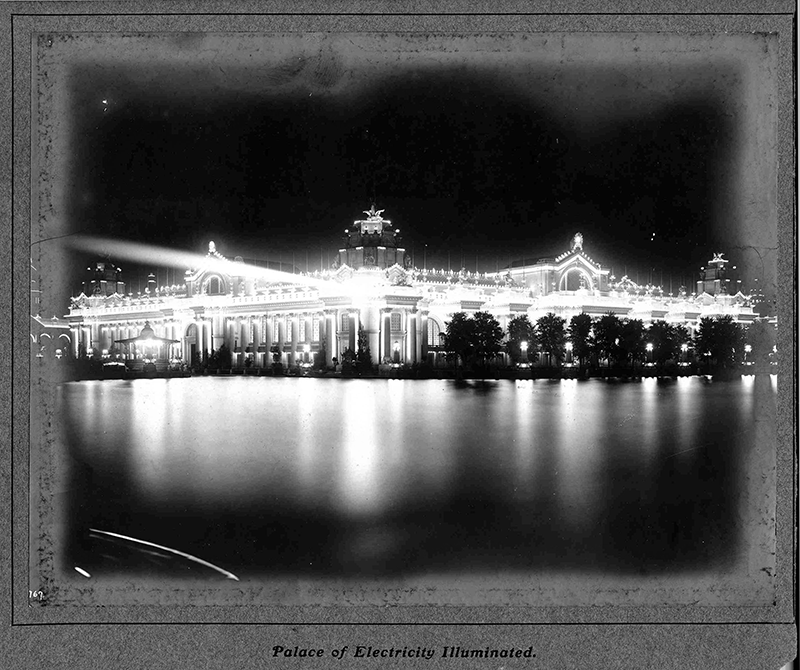 View Image
View Image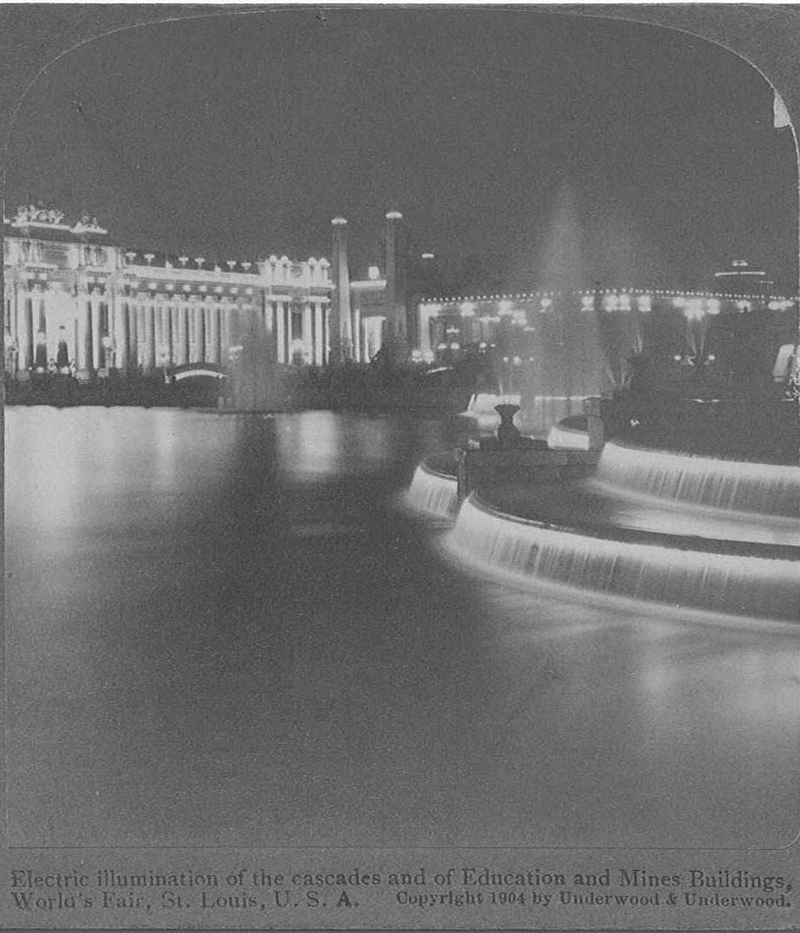 View Image
View Image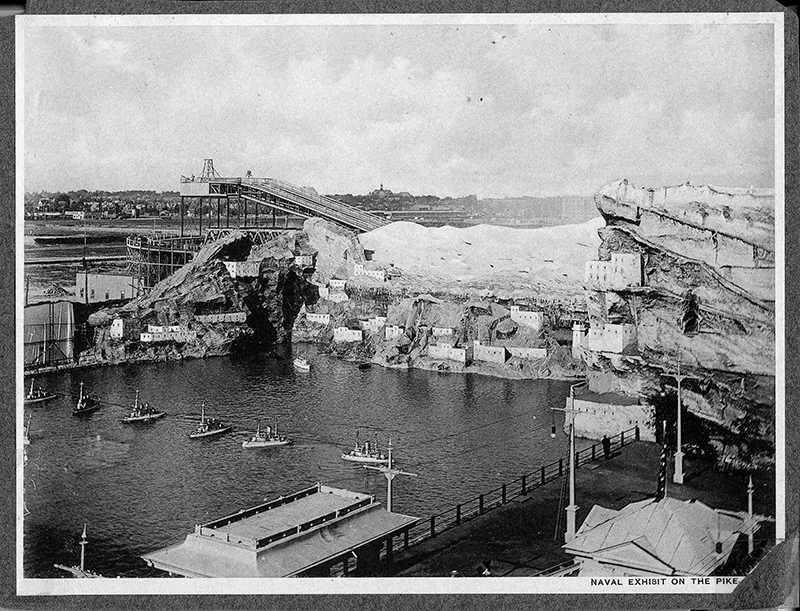 View Image
View Image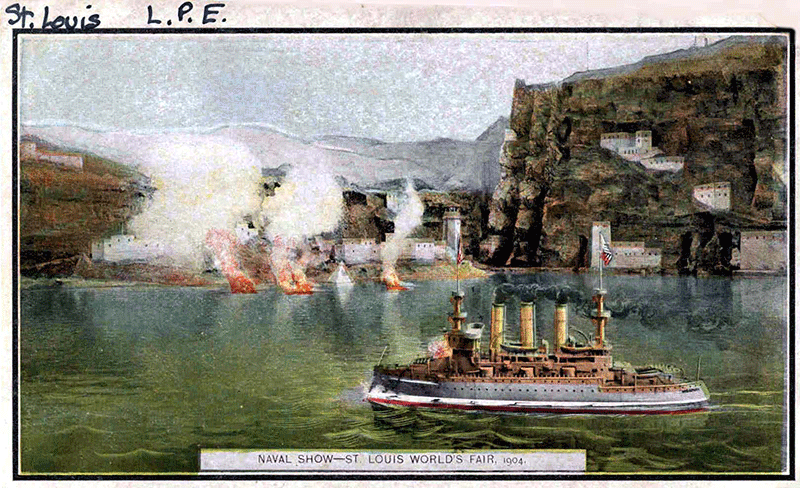 View Image
View Image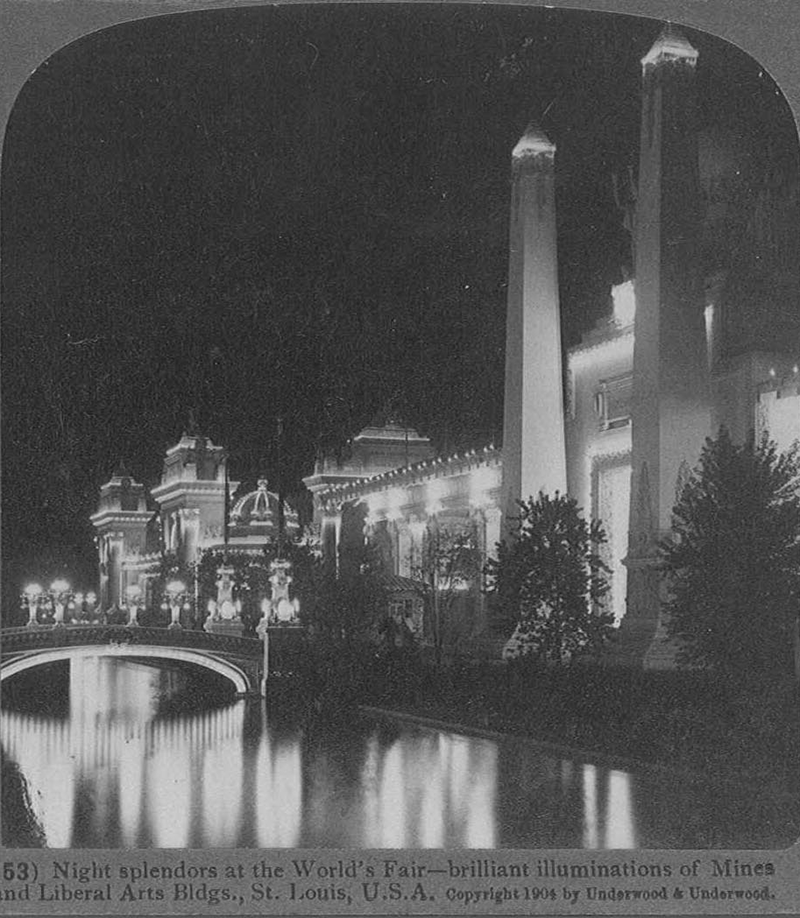 View Image
View Image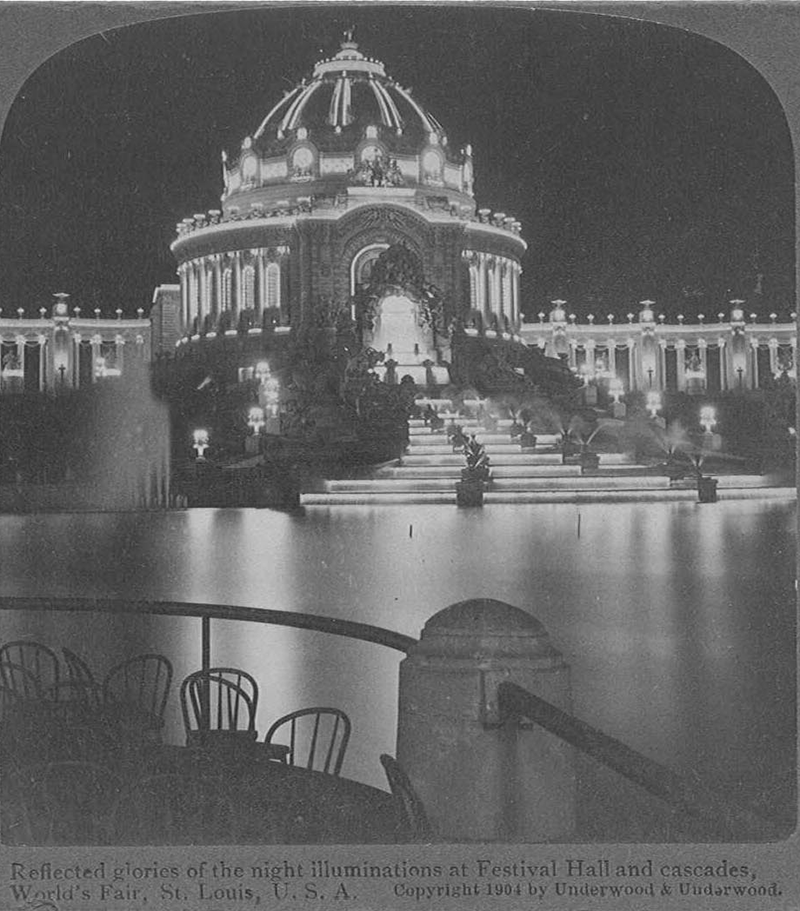 View Image
View Image